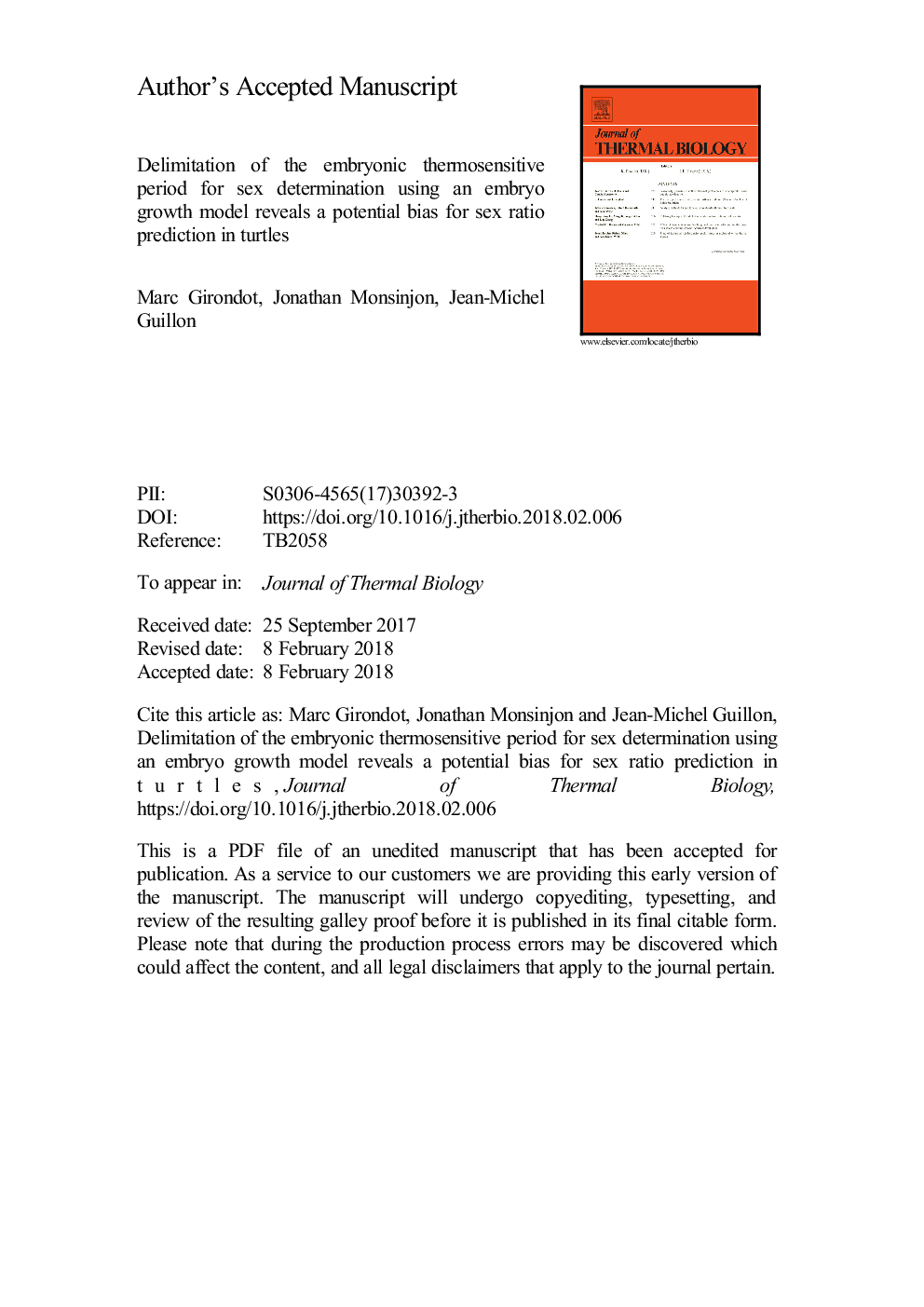ترجمه فارسی عنوان مقاله
تعیین دوران حساسیت جنینی برای تعیین جنس با استفاده از مدل رشد جنینی نشان داد که پیش بینی احتمال بالقوه در لاک پشت ها
عنوان انگلیسی
Delimitation of the embryonic thermosensitive period for sex determination using an embryo growth model reveals a potential bias for sex ratio prediction in turtles
| کد مقاله | سال انتشار | تعداد صفحات مقاله انگلیسی |
|---|---|---|
| 156738 | 2018 | 38 صفحه PDF |
منبع

Publisher : Elsevier - Science Direct (الزویر - ساینس دایرکت)
Journal : Journal of Thermal Biology, Volume 73, April 2018, Pages 32-40
ترجمه کلمات کلیدی
درجه حرارت، انکوباسیون، خزنده لاک پشت، میزان واکنش، تعیین جنسیت وابسته به دما، دوره حساس به حرارت، نسبت جنسیت،
کلمات کلیدی انگلیسی
Temperature; Incubation; Reptile; Turtle; Norm of reaction; Temperature-dependent sex determination; Thermosensitive period; Sex ratio;

